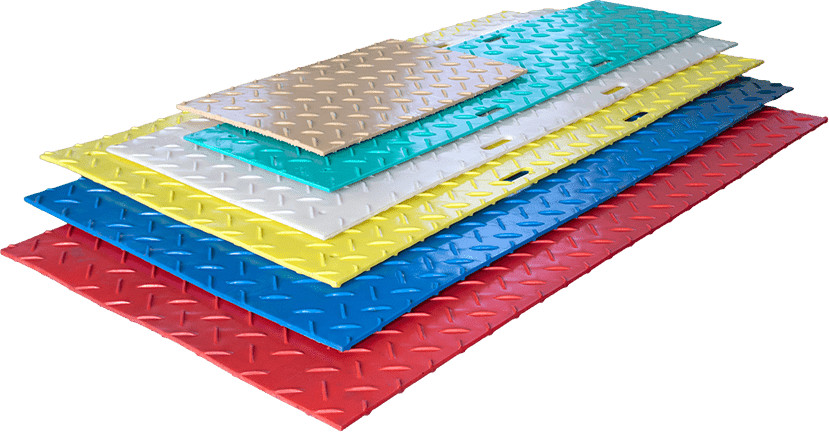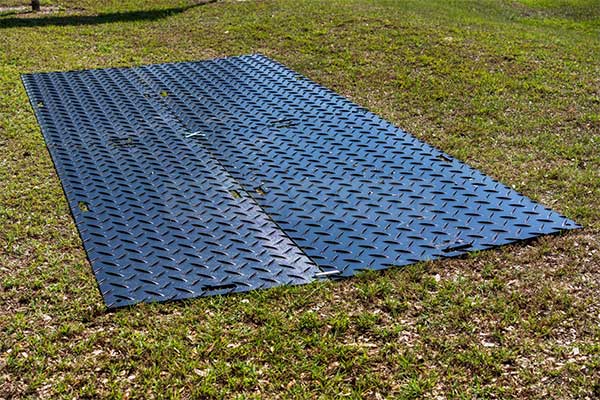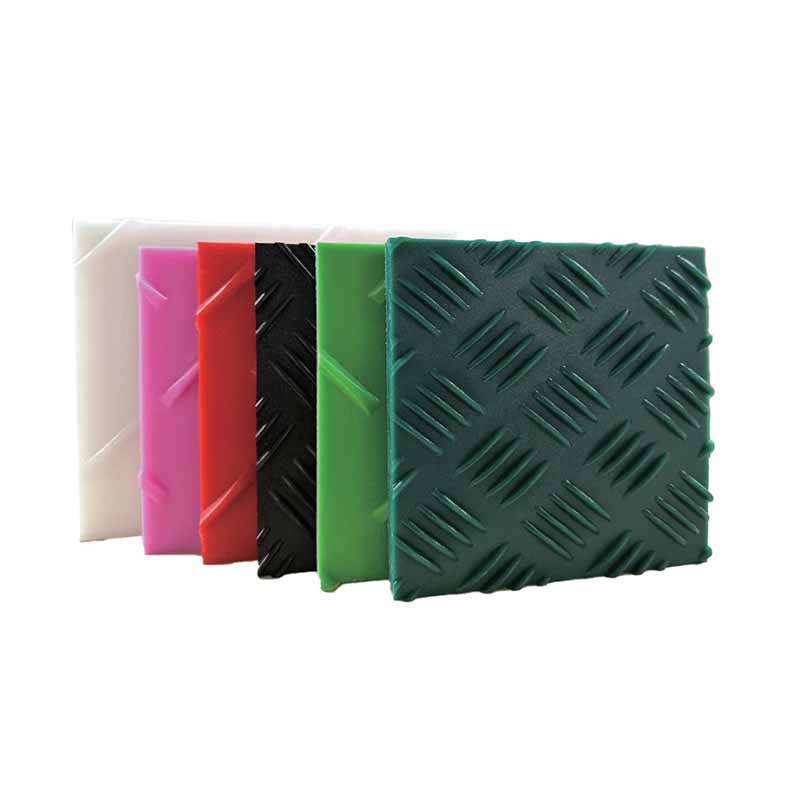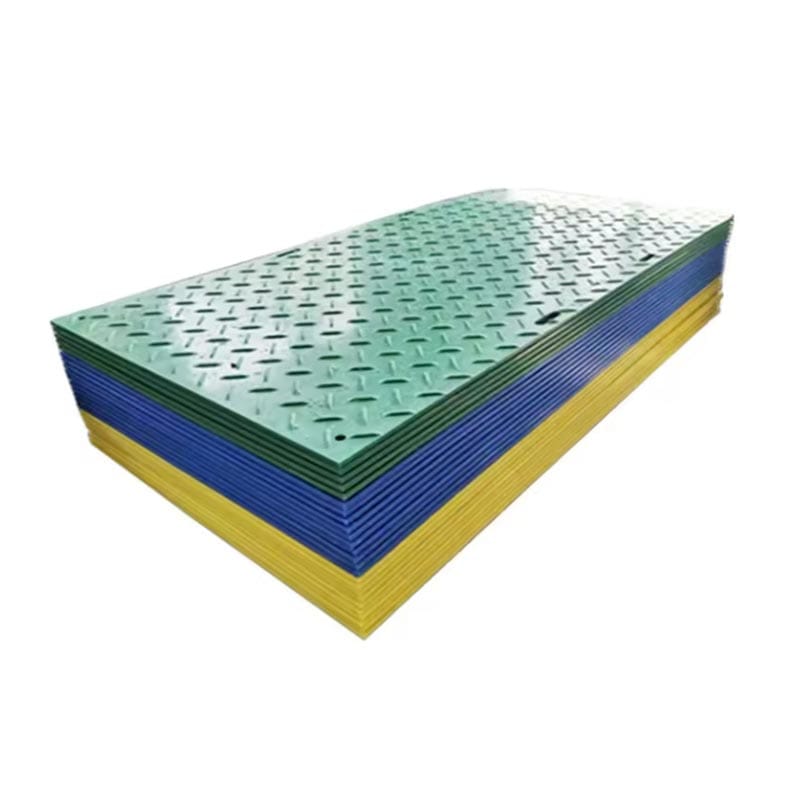Under the guidance of the “dual carbon” goal and energy conservation and emission reduction policies, the construction industry is gradually bidding farewell to traditional paving methods based on high-consumption materials such as steel, wood, bricks and stones, and instead favoring new green, low-carbon and recyclable materials. In this major trend, polymer polyethylene ground protection mats, with their material properties derived from petrochemicals but with excellent environmental friendliness, have quickly emerged in temporary roads on construction sites, access channels for heavy equipment, and hardening of complex terrains such as muddy and soft.
First of all, polymer polyethylene ground protection mats themselves are recyclable and meet the requirements of many national and local environmental protection regulations such as the “Green Building Evaluation Standards” and the “Energy Saving and Green Building Materials Use Management Measures”. The carbon footprint of its production and scrapping process is much lower than that of steel plates and traditional masonry materials. Secondly, the surface of the board is treated with anti-slip texture, which not only ensures driving safety in rainy and snowy weather, but also withstands multiple heavy machinery passages without deformation, thereby significantly extending the service life and reducing the frequency of construction. Furthermore, the installation and disassembly process does not require the intervention of large-scale machinery, and manual work can be completed quickly, greatly improving construction efficiency and reducing energy consumption and labor costs.
More importantly, the modular design of polymer polyethylene ground protection mats enables it to be flexibly spliced to meet the needs of various scenarios from narrow pedestrian walkways to wide heavy machine driving lanes; in temporary projects such as municipal emergency repairs, forest fire prevention channel construction, and temporary parking lots for large activities, it can also achieve the economic benefits of “one-time investment, multiple uses” and the environmental protection effects of “zero pollution, zero waste”. Looking to the future, with the advancement of carbon neutrality practices in various places and the improvement of the green building materials certification system, polymer polyethylene ground protection mats will become the preferred solution that takes into account environmental benefits and engineering efficiency in more high-standard green building projects.
- What is polymer polyethylene ground protection mats?
Polymer polyethylene ground protection mats are a kind of high-strength ground protection mats made of engineering plastics such as high-density polyethylene (HDPE) as the main raw materials, processed by molding or extrusion. Compared with traditional steel plates, wooden boards, and masonry structures, they have better corrosion resistance, wear resistance, and reuse rate.
Core advantages include:
Green and environmentally friendly: can be recycled many times, materials can be recycled, and construction waste can be reduced;
Convenient construction: fast laying, easy disassembly, saving labor costs;
High-strength load-bearing: adapt to the passage of heavy equipment and improve the efficiency of construction site transportation;
Strong weather resistance: anti-ultraviolet, corrosion-resistant, adapt to harsh environments such as rain, snow, wind and sand.
- Main application scenarios
Temporary passages at construction sites
To deal with the muddy and soft ground problems at the construction site, ensure the safe passage of engineering vehicles.
Access passages for heavy equipment
Polymer ground protection mats can carry large machinery such as excavators and cranes to avoid ground subsidence or damage.
Municipal maintenance and road repair projects
Quick laying for closed sections and sidewalks to improve operation safety and efficiency.
Temporary parking lots and exhibition venues
Applied to large-scale events and outdoor displays to protect the original ground and build beautiful and tidy temporary platforms.
- Advantages compared with traditional paving materials
Compared with steel plates, wooden boards and masonry materials, polymer polyethylene ground protection mats have shown significant advantages in many aspects.
4.. Future Development Prospects
As the concept of “green construction” is deeply rooted in people’s hearts, polymer polyethylene ground protection mats are gradually replacing traditional materials and becoming an indispensable ground solution in modern construction projects. Especially in emerging fields such as green certified buildings, prefabricated buildings, and temporary infrastructure construction, its application potential is constantly being released.
Conclusion:
As a new building material that combines environmental protection, economy and practicality, polymer polyethylene ground protection mats are accelerating the change of paving methods in the construction industry. It not only improves the overall management efficiency of the construction site, but also injects new vitality into the green transformation of the industry. In the future, we have reason to believe that this material will shine in more fields.






